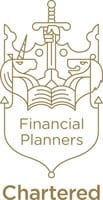Many will be mourning the loss of the CBILS and BBL schemes and the access to cheap credit, which ended this month. However, the new Recovery Loan Scheme (RLS), the Government’s latest covid-19 support programme, which launched this week still provides much needed additional finance to businesses affected by Covid-19.
Applications are now open (from 6 April 2021) for the £75bn Recovery Loan Scheme (RLS) and is available to businesses across the UK affected by the pandemic. It is open to businesses who have already used existing loan schemes such as the Bounce Back Loan or Business Interruption Loan schemes, although the amount borrowed under an existing scheme may in certain circumstances limit the amount available to borrow under RLS.
The Recovery Loan Scheme will operate until 31 December 2021 and accompanies various other business grants available through local authorities. The main stipulation is that the business must have been affected by Covid-19 and the finance can be used for any legitimate business purpose – including managing cashflow, investment and growth.
You may even wish to use the loan to fund business accelerator advice from Robson Laidler to help you grow and reach goals.
There is no turnover restriction for businesses accessing the scheme.
How it works
Lenders
The Recovery Loan Scheme will initially be available through several lenders accredited by the British Business Bank. New lenders under the scheme will be listed on the British Business Bank website as they become accredited.
Accredited lenders include Bank of Scotland, Barclays, HSBC, NatWest, Lloyds Bank, Paragon, RBS, Santander, Skipton Business Finance, Yorkshire Bank and Clydesdale Bank.
A key aim of the Recovery Loan Scheme is to improve the terms on offer to you, but if a lender can offer you the choice of a commercial loan on better terms, without requiring the guarantee provided by the RLS, they should do so.
Types of finance
A lender can provide up to £10m as one of the following facilities:
- term loan;
- overdraft;
- invoice finance;
- asset finance; and
RLS gives the lender a government-backed guarantee against the outstanding balance of the facility. Borrower are 100% liable for the debt.
For loans of £250,000 or less, the lender will not take any form of personal guarantee.
For amounts over £250,000, the lender has the discretion to decide whether to take personal guarantees. However, above £250,000, the maximum amount that can be covered under RLS is capped at a maximum of 20% of the outstanding balance of the RLS facility after the proceeds of business assets have been applied.
The scheme is capped at a total loan facility of £10m per business (maximum £30m per group). Minimum facility sizes vary, starting at £1,000 for asset and invoice finance, and £25,001 for term loans and overdrafts.
The annual effective rate of interest, upfront fee and other fees cannot be more than 14.99%.
It is important to note that no personal guarantees can be held over principal private residences.
Applicants for finance will need to provide certain evidence to show they can afford to repay the RLS-backed facility. This is likely to include the following:
- management accounts;
- business plan;
- historic accounts; and
- details of assets.
The Recovery Loan Scheme aims to ensure that businesses continue to have access to the finance they need as we move out of this crisis. For support in how to access this scheme or to help you apply contact us.

